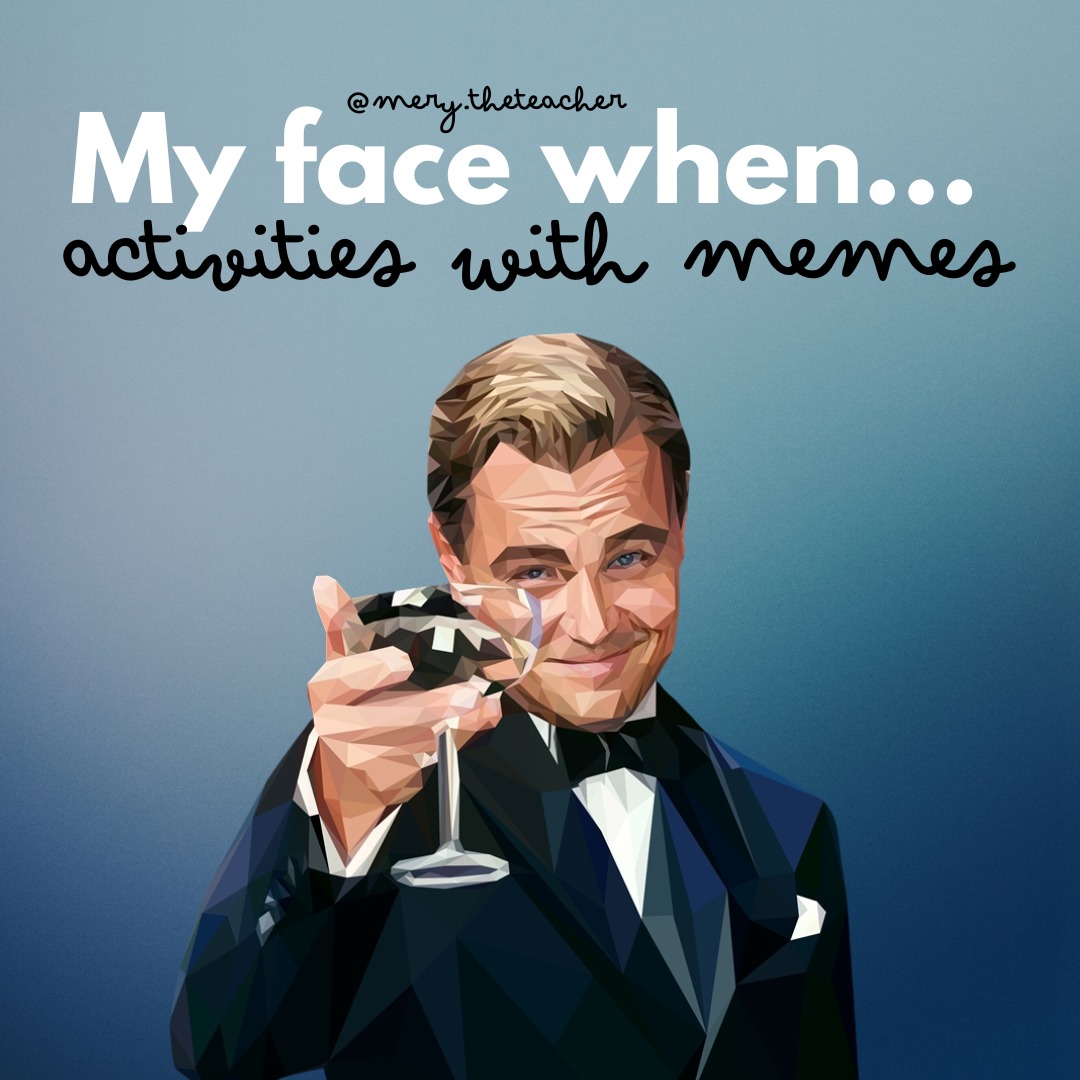"Memes Activity: My Face When..." is an engaging ESL activity designed to help students practice descriptive language and express emotions through the use of internet memes. This activity taps into the popular meme format "My face when..." (MFW), which is commonly used to describe a reaction to a specific situation using a humorous or exaggerated facial expression.
How the Game Works:
-
Introduction to Memes: The teacher begins by explaining what memes are and how the "My face when..." format works. Examples of popular memes can be shown to demonstrate how the phrase is paired with images to convey humor or emotions.
-
Creating Sentences: Students are asked to come up with their own "My face when..." sentences. For example, "My face when I realize there's no homework this weekend." These sentences should describe a situation and the emotional reaction it would elicit.
-
Matching Sentences to Images: The teacher provides a collection of images showing various facial expressions or allows students to search for their own pictures online. Students then match their "My face when..." sentences with the appropriate facial expression or picture that best represents their imagined reaction.
-
Sharing and Discussion: Once the sentences and images are paired, students share their memes with the class. This part of the activity encourages speaking practice as students explain why they chose each image and sentence pairing. The class can discuss whether the image matches the sentiment and offer alternative suggestions.
-
Creative Expression: To enhance creativity, students can be encouraged to think of unique or funny situations, leading to a variety of imaginative and humorous memes. This activity fosters a relaxed and enjoyable learning environment where students feel comfortable expressing themselves.
-
Learning Outcomes: By participating in the "Memes Activity: My Face When...", students practice forming descriptive sentences, learn new vocabulary related to emotions and reactions, and enhance their ability to communicate feelings in English. It also helps them understand cultural nuances in humor and language.
This activity combines visual aids, humor, and language practice, making it an effective and entertaining way to engage ESL students in learning and using English expressively.


